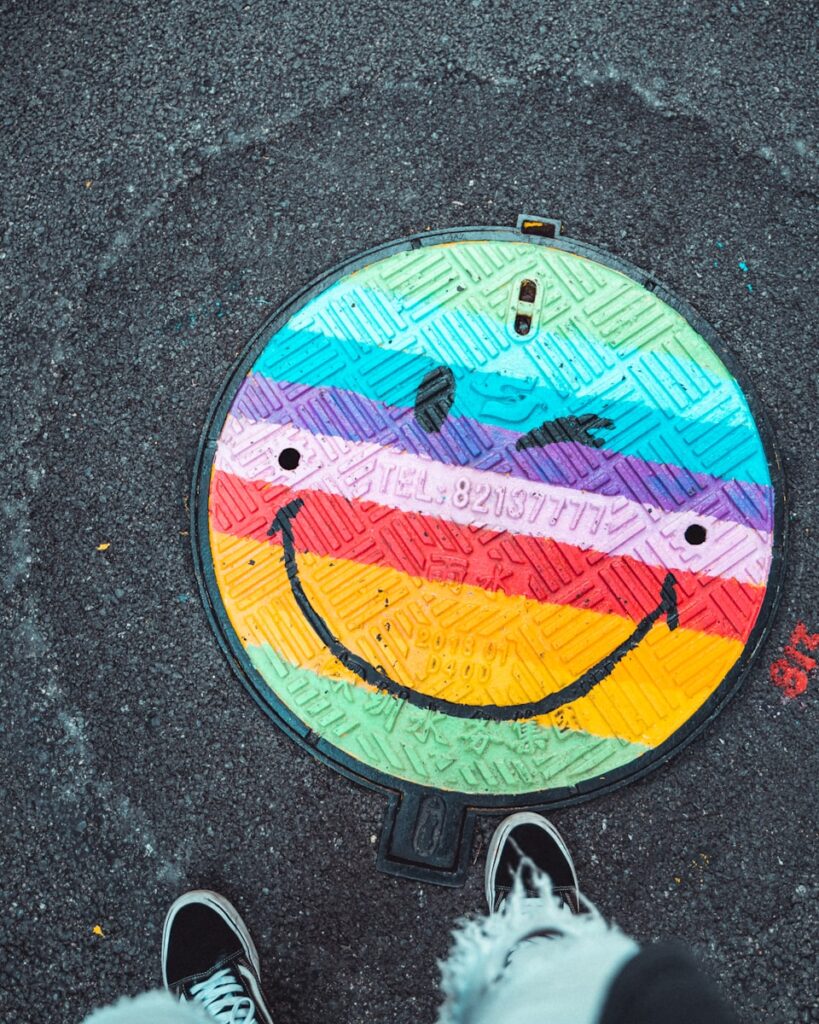How to Say ‘Are You Happy?’ in Spanish – Tips and Common Mistakes
Imagine you’re sipping coffee at a cozy café in Madrid, and the friendly barista asks, “¿Estás feliz?” You freeze for a moment, realizing you want to respond but aren’t sure how to ask the same question back. It’s these little moments that make learning a new language so exciting and sometimes a bit nerve-wracking.
We’ve all been there—caught in a conversation where you want to connect on a deeper level but lack the right words. Asking someone if they’re happy is a simple yet powerful way to show you care. In Spanish, you can say, “¿Estás feliz?” or “¿Eres feliz?” depending on the context. Understanding the nuances will not only boost your confidence but also enrich your interactions.
Stick around, and you’ll discover the subtleties between these phrases and when to use each one. By the end, you’ll be ready to ask, “¿Estás feliz?” with ease and authenticity, making your conversations more meaningful.
Translating “Are You Happy” to Spanish: Key Phrases

Exploring the emotional world of language adds richness to your conversations. When you ask someone if they’re happy in Spanish, subtle differences matter.
Basic Translation: “¿Estás feliz?”
Using ¿Estás feliz? translates directly to “Are you happy?” This phrase suits most casual contexts when addressing someone you know. It captures temporary feelings rather than a deep-seated state of happiness.
Breaking Down the Components
Let’s break it down:
So, ¿Estás feliz? asks if someone feels happy right now rather than in general.
Pronunciation Guide
Don’t get tongue-tied! Pronounce it like this:
Use this guide to sound more confident when speaking.
How to Ask “Are You Happy” in Spanish
Why stick to just one phrase? Depending on context and formality, you might need different translations.
Informal Contexts
With friends or family, using ¿Eres feliz? makes sense when inquiring about someone’s overall happiness.
Formal Contexts
In more formal settings, use ¿Está feliz usted? for politeness. It respects individual boundaries and maintains decorum.
Common Phrases for Beginners
Feeling overwhelmed by choices? Here are some beginner-friendly options:
Here’s a table summarizing these:
Context | Phrase | Translation |
|---|---|---|
Informal | ¿Eres feliz? | Are you happy? (overall) |
Formal | ¿Está feliz usted? | Are you happy? (polite) |
Beginner | ¿Estás contento/contenta? | Are you happy? (content) |
Beginner | ¿Te sientes feliz? | Do you feel happy? |
Beginner | ¿Eres feliz con tu vida? | Are you happy with your life? |
Cultural Context of Asking About Happiness in Spanish-Speaking Countries
You might think asking if someone’s happy is straightforward, but in Spanish-speaking cultures, it carries rich cultural nuances.
Importance of Emotional Expressions in Hispanic Culture
Hispanic cultures are emotionally vibrant. People express their feelings openly and warmly. When asking “¿Eres feliz?” or “¿Estás feliz?”, you tap into a area of genuine, heartfelt communication. They value this emotional expressiveness deeply. Think about family gatherings filled with music, art, and hearty meals, where joy and laughter flow freely. This context makes your question feel more connected and sincere.
When to Ask “Are You Happy” in Spanish
Timing and context are key. If you’re at a festive event, like a quinceañera or a family reunion, asking “¿Eres feliz?” blends naturally with the celebratory mood. In more serious settings, a heartfelt “¿Estás feliz?” invites an honest reflection. Respect their social norms and personal space. Asking about happiness shows interest in their well-being, but do it gently and appropriately.
Cultural Differences in Expressing Happiness
Expressions of happiness vary greatly. In Spain, people might use “alegre” often, while in Mexico, “contento” might be more common. Understand that happiness isn’t just a word but a reflection of their deep social and familial bonds. They prioritize relationships and faith, finding joy in communal activities and shared traditions.
Term | Context Usage |
|---|---|
¿Eres feliz? | General happiness, more personal |
¿Estás feliz? | Current state, situational |
Feliz | Common across most contexts |
Alegre | Often used in Spain |
Contento | Frequent in Mexican communities |
Recognizing these cultural subtleties enriches your interactions, showing respect for their traditions. You’re not just asking if they’re happy; you’re engaging with their world.
Variations of “Are You Happy” in Spanish
You’re eager to know how to say “Are you happy?” in Spanish and that’s awesome! Mastering these phrases helps deepen connections with Spanish speakers.
Formal Ways to Ask
When you want to show respect or you’re in a professional setting, you’ll use these formal phrases. Here are the various ways to ask if someone is happy formally:
Phrase | Singular/Plural | Formality |
|---|---|---|
¿Eres feliz? | Singular | Informal |
¿Está feliz? | Singular | Formal |
¿Son felices? | Plural | Formal |
¿Están felices? | Plural | Informal |
Imagine meeting someone important at work or a new acquaintance – a formal touch shows your respect!
Informal Ways to Ask
Getting personal with friends or family? Here’s how to casually ask about their happiness:
Phrase | Context |
|---|---|
¿Estás feliz? | Commonly used with friends and close acquaintances. |
Picture a family gathering or hanging out with friends – these phrases fit right in. They help convey a warm and personal connection.
Regional and Slang Expressions
Spanish varies by region. Here are some unique expressions across Latin America:
Phrase | Region | Meaning |
|---|---|---|
Buena onda | Argentina, Uruguay | Good vibes |
Arrastar el ala | Latin America | To make a romantic advance |
Lo atamos con alambre | Argentina | To bodge something |
Échale ganas | Mexico | To put energy into something |
Hazme un fa | Colombia | To ask for a favor |
Más loco que una cabra con pollitos | Latin America | Crazier than a goat with chicks |
These phrases give a flavor of local culture and add a fun twist to your language skills. Why not surprise someone with a regional expression?
Advanced Expressions of Happiness in Spanish
Expressing happiness can go beyond just being “happy.” Here are some advanced phrases:
Phrase | Meaning |
|---|---|
Estoy emocionado | I’m excited |
Estoy más feliz que un pajarito | I’m happier than a little bird |
Using these expressions adds depth to your conversations, showing you’re not just learning phrases – you’re embracing the culture.
By mastering these variations, you’re equipped to navigate different social settings with ease, making every interaction more meaningful and genuine.
Responding to “Are You Happy” in Spanish

Ever wondered how to express your happiness or unhappiness in Spanish? Maybe you’re talking to a friend, a colleague, or even a new acquaintance. Let’s break down how you can answer the age-old question, “Are you happy?”, with flair and authenticity.
Positive Responses: Expressing Happiness
Expressing joy can brighten any conversation. Here are some ways you can share your happiness in Spanish:
Table: Positive Responses
Spanish Phrase | Translation |
|---|---|
Estoy feliz | I’m happy |
Estoy contento/a | I’m content |
Me alegra mucho | It makes me very happy |
Estoy emocionado/a | I’m excited |
Estoy encantado/a | I’m delighted |
Imagine your friend asks, “¿Estás feliz?“ (Are you happy?). You can cheerfully say, “Estoy feliz“. If you’re feeling more exhilarated, try “Estoy emocionado/a“ (I’m excited). These phrases show different shades of happiness, helping you convey exactly how you feel.
Negative Responses: Expressing Unhappiness
There are times when you’re not your bubbly self, and that’s okay. Here’s how you can express those feelings:
Table: Negative Responses
Spanish Phrase | Translation |
|---|---|
Estoy mal | I’m unhappy |
Me siento mal | I feel bad |
Estoy triste | I’m sad |
Estoy decepcionado/a | I’m disappointed |
Estoy frustrado/a | I’m frustrated |
So, your day isn’t going as planned, and someone asks, “¿Estás feliz?“. You could openly say, “Estoy mal“. If you’re bummed out about something specific, you might say, “Estoy decepcionado/a“ (I’m disappointed). Expressing these emotions can often lead to more meaningful conversations.
Neutral or Polite Responses
Sometimes, you’re neither happy nor sad — just somewhere in between. Here are balanced responses for those ‘meh’ days:
Spanish Phrase | Translation |
|---|---|
Estoy bien | I’m fine |
Estoy regular | I’m okay |
Estoy así así | I’m so-so |
Estoy cansado/a | I’m tired |
Estoy un poco cansado/a | I’m a little tired |
Let’s say you’re having an average day, and someone asks, “¿Estás feliz?“. You might respond with, “Estoy así así“ (I’m so-so). If you’re feeling weary, saying, “Estoy cansado/a“ (I’m tired) communicates your state without implying negativity. These responses help keep the conversation cordial and truthful.
Recognizing these varied responses can enhance your interactions in Spanish-speaking scenarios. They let you express yourself accurately and empathetically, making your conversations richer and more genuine.
Practice Dialogues: Using “Are You Happy” in Spanish
Everyone wants to engage in genuine conversations, and asking “Are you happy?” in Spanish can open doors to meaningful exchanges. Whether chatting with friends or exploring a formal setting, choosing the right phrasing is crucial.
Casual Conversations with Friends
Casual chats with friends are perfect for using informal language. You can ask:
Using these phrases helps you connect on a personal level. Imagine sitting at a café, sipping on coffee, and wanting to know how your friend truly feels. Saying ¿Eres feliz? makes the conversation feel intimate and genuine.
Professional Settings and Formal Situations
In professional or formal settings, the tone changes. Here, using formal phrasing conveys respect:
Imagine you’re meeting a colleague for the first time at a conference. Asking ¿Es feliz? shows you value their feelings while keeping it professional. This small adjustment can make a big difference in how you’re perceived.
Tips for Natural-Sounding Conversations
Engaging in natural conversations requires practice and context awareness. Here are some tips to sound more authentic:
- Practice Speaking: The more you practice, especially with native speakers, the more natural you’ll sound. Why not join a language exchange group?
- Use Context: Always choose the correct form based on the situation and whom you’re addressing. If you’re unsure, err on the side of formality.
- Listen and Learn: Pay attention to how native speakers use these phrases in different settings. It’s a great way to pick up subtle nuances.
By understanding and practicing these forms, you’ll not only improve your Spanish but also make your conversations more meaningful. Whether you’re asking ¿Eres feliz? or ¿Es feliz?, you’ll be ready to connect on a deeper level.
Avoiding Mistakes When Asking “Are You Happy” in Spanish

When diving into Spanish, especially for something as heartfelt as asking about happiness, you wanna get it right. Let’s peel back the layers and ensure you’re not making common mistakes.
Literal Translation Pitfalls
Ever thought, “I’ll just translate ‘Are you happy?’ word for word”? It seems straightforward, but it’s trickier than it looks. A direct translation gives you ¿Eres feliz? But here’s the kicker––this isn’t right.
Literal translations can be tempting because they seem efficient. But, Spanish doesn’t always play by English rules. Context matters, and Spanish is rich with it. Learning the right way means understanding more than just vocabulary.
Understanding “Ser” vs. “Estar”
Here’s where Spanish throws a curveball. Unlike English, Spanish uses two verbs for “to be”: ser and estar. Knowing which to use can make or break your sentence.
Ser indicates a permanent state. Think of it like the foundation of a building––it’s long-lasting. Estar, on the other hand, shows a temporary state. Like a flower, it can change.
Since happiness often changes, you use estar. So instead of asking ¿Eres feliz?, you ask ¿Estás feliz?. Here’s a quick look:
Verb | Usage | Example Sentence |
|---|---|---|
ser | Permanent state | ¿Eres feliz? |
estar | Temporary condition | ¿Estás feliz? |
Common Mistakes to Watch Out For
Language learning comes with its quirks, and Spanish is no exception. False friends are words that look similar to English but mean something entirely different.
Watch these tripwires to avoid awkward moments. Paying attention to context and nuances ensures you communicate clearly.
Conclusion: Mastering “Are You Happy” in Spanish
Learning how to ask “Are you happy?” in Spanish opens doors to deeper connections and understanding. By being mindful of cultural nuances and language intricacies, you can avoid common pitfalls and communicate more effectively. Whether you’re using formal or informal phrases, knowing when to use “ser” and “estar” will make your conversations more genuine. Keep practicing and don’t be afraid to make mistakes—each interaction is a step toward mastering this beautiful language. Happy conversing!
Frequently Asked Questions
How do you ask “Are you happy?” in Spanish formally?
To ask “Are you happy?” formally in Spanish, you would say “¿Está feliz?”.
How do you ask “Are you happy?” in Spanish informally?
In informal situations, you can ask “¿Estás feliz?”.
What is important to consider when asking about happiness in Spanish?
Understanding the difference between “ser” and “estar” is crucial, as “ser” refers to permanent states while “estar” refers to temporary states.
What are some common mistakes to avoid when asking “Are you happy?” in Spanish?
Avoid literal translations which may not convey the intended meaning. Be mindful of false friends and always consider the context.
Why is cultural sensitivity important when asking about happiness in Spanish?
Spanish-speaking cultures may interpret questions differently, so being aware of cultural nuances helps ensure effective and empathetic communication.






